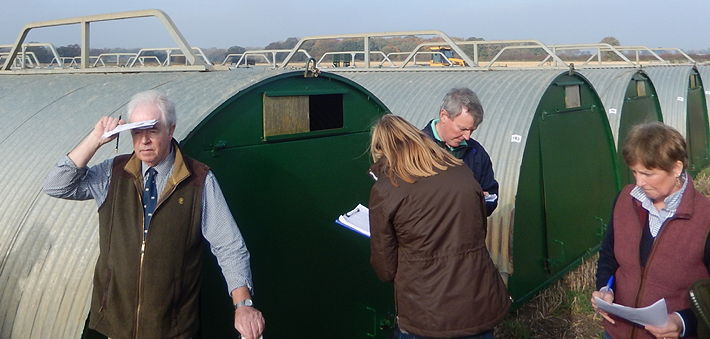Although the SPP eased this week by 0.26p to stand at 163.63p, demand for spot pigs proved to be a shade firmer than previously with spot bacon prices in and around the 165p/kg mark, although one or two shrewd sellers were able to improve in this indicating a slight shortage live UK pigs in the system.
Weekly contribution prices have once again remained at generally similar levels between 155p – 163p/kg, which has been the case since the December 7 last year.
Cull sow prices have eased back due to lower values in Germany and mainland Europe over the past seven days.
Some, but not all of the reduction in sow prices has also been due to a weaker Euro which traded on Friday at noon at 87.08p compared with 87.85p seven days earlier.
Weaner prices have continued on something of a rollercoaster ride, although some of the ground lost last week has now been made up, with the latest AHDB 30kg ex farm average improving by £1.19/head to £58.78/head and the 7kg ex-farm average has also recovered to the tune of £1.52/head and now stands at £43.47/head.
However, commodity markets do not like being exposed to uncertain times and on a global basis that is where planet earth seems to be at present.
Cereal and protein costs have remained at generally similar levels over the past week with UK feed wheat traded at £158/t for May and £167/t for December.
Feed barley continues to trade at a discount when compared with wheat with £137/t for May and £138/t for September.
Shorter protein values have however eased with Hipro soya traded for March at £332/t compared with £340/t a week ago.
Protein prices for longer months saw Hipro soya traded at something of a discount with deals clinched at £308/t from November to April 2021.
And finally, more bad news on the disease front as far as two and four legged species are concerned with ASF resurfacing in China and in Poland, the latter outbreaks are far to close for comfort. News of the reoccurrence of ASF in China where restocking of empty pig units has been taking place is also a stark reminder of the potential problems that lie ahead, unless it is possible to successfully eradicate ASF before restocking on a countrywide basis.
Since August 2018 the Chinese pig numbers have dropped by a massive 50% which relates to 25% of the global pig herd and until this imbalance has been rectified export opportunities remain open for many other countries to supply the missing pig meat, providing it can be kept “clean”.
Further worrying news for American pig producers are reports that following the closure of the Chinese owned Smithfield Foods abattoir in South Dakota, which had become the biggest single source of employee Coronavirus outbreaks. Two more large plants in Wisconsin and Missouri have since been closed.
This starkly underlines the difficulty of running meat processing parts where space is a premium and, in some cases, it is difficult to comply with minimum working space requirements.
The human and financial costs of the COVID-19 pandemic and multi-billion dollar liabilities have yet to be calculated, but in any event ‘this little piggy went to market’ remains the aim.




